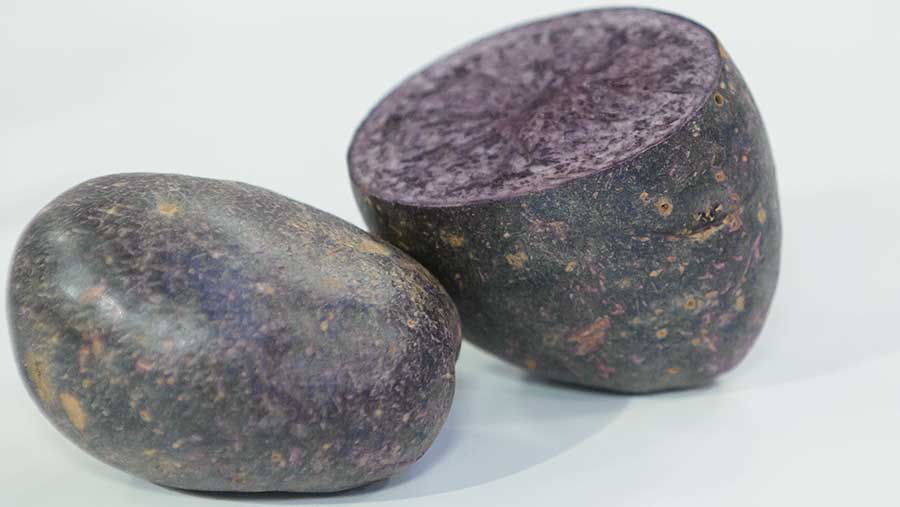Purple potatoes offer fresh sales opportunity
 © Ken McKay-REX Shutterstock
© Ken McKay-REX Shutterstock Promoting the health benefits of purple potatoes could help get spuds included in the recommended five-a-day fruit and veg portions and boost fresh potato sales.
Fresh potato consumption has slipped in recent years due to increased consumer focus on convenience foods and the myth that spuds are unhealthy and fattening.
A recent boom in soft fruit sales has been driven by the perceived health benefits of berries with high levels of anthocyanin – a pigment that gives fruit its red, blue or purple colour.
Consumed in adequate quantities, the pigment has been linked with reducing accumulation of cholesterol in the blood stream, type-2 diabetes and cancer.
See also: Predictions for the potato sector in 2016
Potato supplier Albert Barlett introduced a non-GM high anthocyanin purple fleshed potato variety called Purple Majesty to the market in 2010, but it’s had limited commercial success so far.
Cathie Martin of the John Innes Centre believes more could be done to promote the potential health benefits of such varieties to the consumer, which in turn could open new opportunities for producers.
“I worry that too much focus is put into producing what consumers want, rather than looking at the nutritional benefits of food.
“If we can sell them [purple potatoes] as a health promoting food, they could provide a significant contribution to increasing dietary anthocyanin, which on average is pretty low,” explained Prof Martin.
Huge cost
An obesity epidemic is beginning to bite in the UK, with related conditions such as type-2 diabetes and heart disease costing the NHS about £8.8bn per year and rising.
The NHS promotes healthy eating by recommending people consume at least five 80g portions of fruit and veg a day to counter obesity and associated diseases as an attempt at drug-free dietary intervention.
The potato isn’t on the list of foods that count towards the five a day, despite being a great source of energy, fibre, vitamins and potassium.
However, Prof Martin believes increasing anthocyanin levels could give an extra dimension and help spuds muscle their way onto the list and provide a boost to fresh sales.
She has been part of the team that developed the high anthocyanin GM purple potato at Norwich’s John Innes Centre, and is in the process of seeking approval from the Food and Drug Administration (FDA) to sell the tomato in the US.
Consuming two GM tomatoes provides an adequate daily intake of dietary anthocyanin and it’s estimated about six potatoes would be required for a similar amount.
“The French fries look unappetising, but eating them in salads could be a way of increasing anthocyanin intake,” added Prof Martin.
Cathie Martin MBE was speaking at the 26th annual Cambridge University Potato Growers Research Association (CUPGRA) conference at Robinson’s College.

